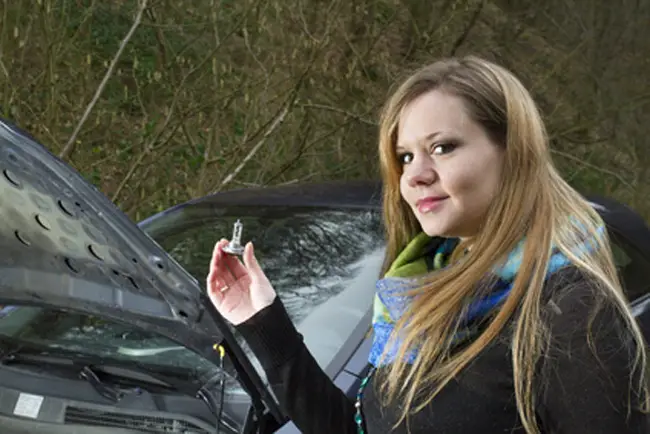Visibility is a safety concern that no driver can afford to ignore. Knowing how to spot a problem with your vehicle’s lighting system and being able to change a headlight or taillight when there is an issue can improve safety and spare you the added expense of arranging for a mechanic to do the work for you. Many cars are trucks are designed to provide owners with quick and easy access to the lighting system so that swapping out an old bulb can be done without any special tools or equipment. Replacing a headlight or taillight that is no longer functioning may prove far easier than you might have expected.
Identifying a Problem with Your Vehicle’s Lighting System
Inspecting Your Vehicle
Failing to take stock of the condition of your car or truck, or being unable to identify the signs that may indicate a problem with your lighting system is a problem that is all too common for many drivers. While the only sure way to know that your head or taillight may require replacing is to visually inspect the bulb itself, Learning how to spot any issues with your lighting system can do much to ensure your overall safety. Noticing a decreased field of illumination when you are behind the wheel is a common sign that you may have a bad bulb.
Turn Signals Provide Useful Information
While noticing a problem with your headlights can be hard to miss, taillights are often a little harder to inspect. Turn signals and designed to provide drivers with an additional indication that their vehicle may be suffering from a problem. Rapid or uneven cycling of your blinkers mean that a prompt inspection of your tail and break-lights would be in order. Rapid cycling when a turn signal is in the left or right position can even indicate which light may be out or suffering from an electrical problem.

Replacing Your Bulb
Accessing the Lighting Assembly
The bulb itself is located within the head or taillight assembly, but most modern vehicles have been designed to provide easy access to ensure more convenient replacement. Turning your engine off and allowing it to cool before attempting to access any equipment under the hood should always be the first step in the process. Disconnecting the negative lead for your battery terminal may be required for safety reasons should you need to remove the entire assembly to access your bulb. Checking your owners manual in order to learn how to access your head or taillights would also be a wise move for any driver unfamiliar with the layout of their vehicle or the process involved.
The headlight assembly can be accessed by raising the hood, and most taillights can be reached through the truck or rear hatch of the vehicle. When replacing taillights, you may need to first remove any panels from the rear cargo area. The panels on most vehicles can be easily removed by hand or with a simple screwdriver. For vehicles where access to the head or taillight assembly is not possible without first removing bumpers or other mechanical components, the assistance of a professional may provide a more convenient solution.
Removing and Inspecting the Bulb
The bulb itself will be socketed to the center of the lighting assembly, and is held in place with a rotating collar on most vehicles. Finding the bulb can be done by tracing any electrical wires that emerge from the lighting assembly, and removal typically involves little more than rotating the collar by hand, and then pulling on the base of the wire until the bulb pulls free. Most head and taillights simply snap into position at the base of their sockets and should require no additional tools in order to completely remove.
Once the bulb has been freed from the lighting assembly, a quick visual inspection can be performed in order to assess its working condition. While soot, scoring or a loose filament are clear signs of a bad bulb, they may not always be present and their absence should not be taken as an indication that they are still operating properly. Taking the old bulb with you can make finding a suitable replacement a much easier task. Replacement bulbs are typically sold in pairs to ensure a comparable life span, and it is always a good idea to replace both bulbs- even if you are only having an issue with one.
Ensuring Proper Operation of Your Vehicle’s Illumination System
Replacing a bulb is done by reversing the steps of the removal process, taking care to ensure that the new bulb is properly secured to the lighting assembly. A visual inspection to ensure proper operation of all lights and indicators should be performed before the vehicle can be safely driven. Illumination and viability are paramount safety concerns.Knowing how to identify the signs that you may have a problem with your head or taillights, as well as being able to promptly replace a bulb, will help keep you safe whenever you get behind the wheel.
